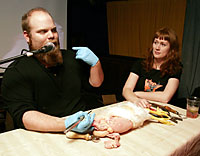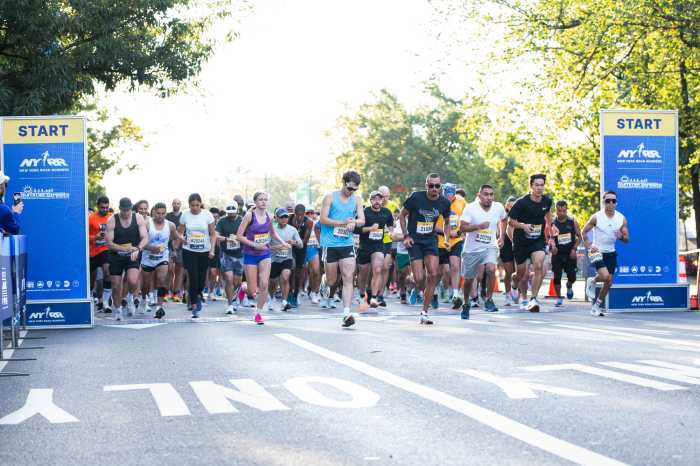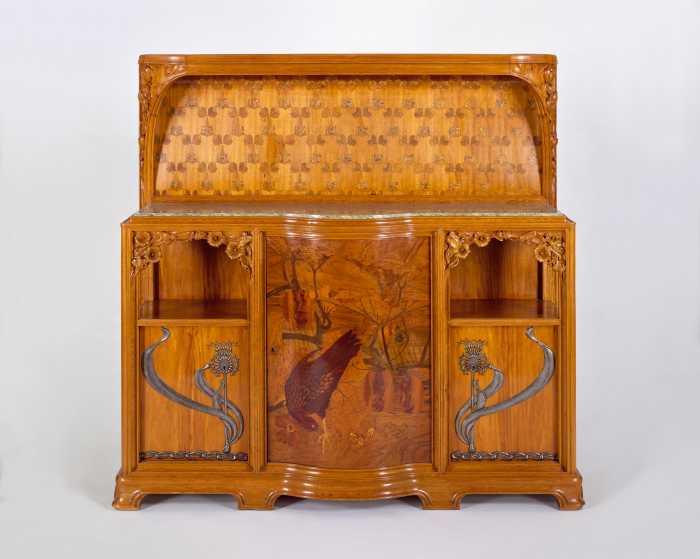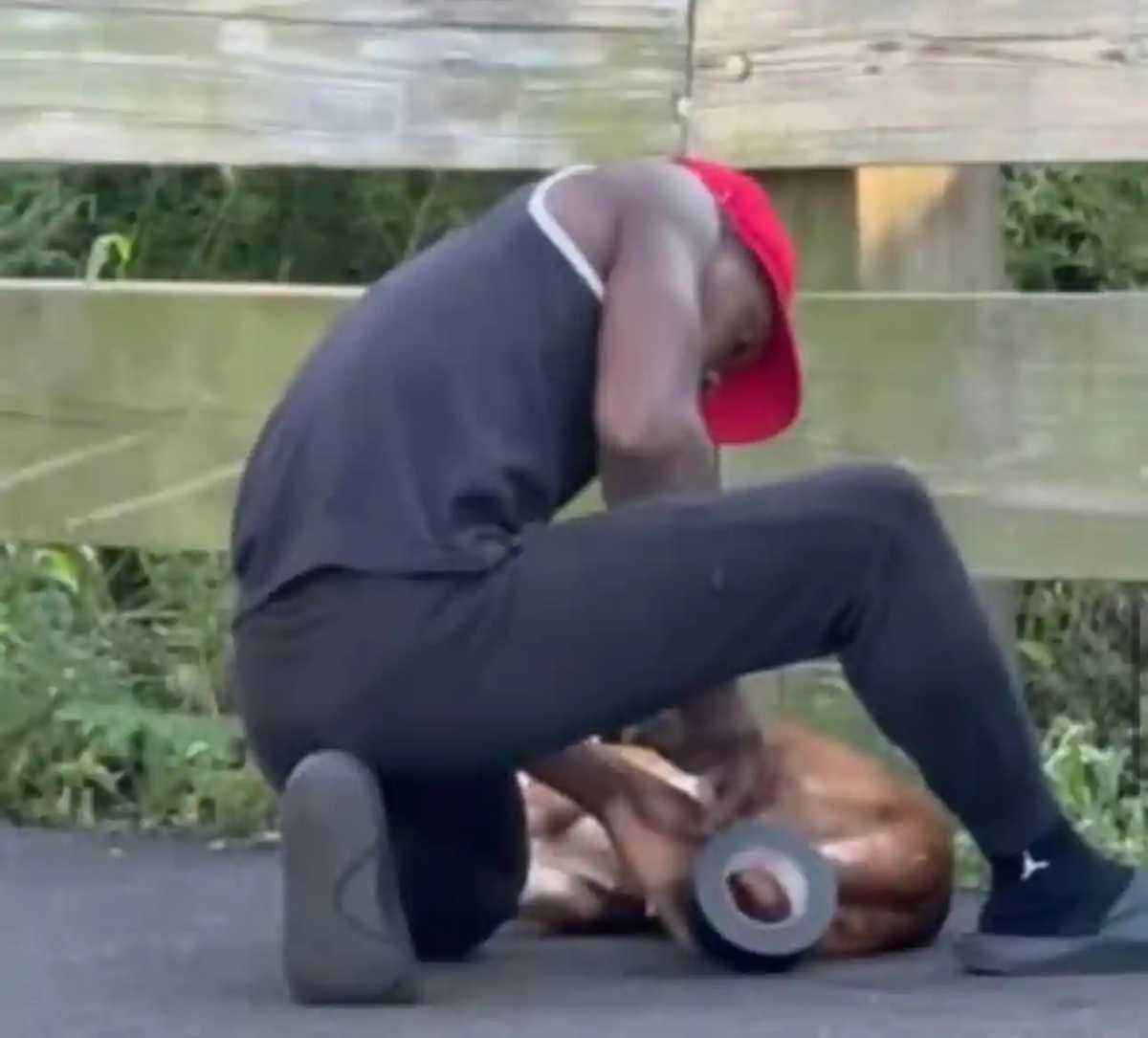A chic bar in Park Slope hosted a master class on how to mount dead animals.
Taxidermy, of course, is an activity more commonly associated with union halls upstate than with Union Hall, the bar on Union Street.
But at 5:30 pm last Saturday night, Scott Bibus, a member of the Minnesota Association of Rogue Taxidermists, sat down at a long table in the pub’s trendy basement, for once church-like in its silence.
Bibus put his scalpel to the breast of a white-feathered chicken, and sliced it down the middle, all the way to its “vent,” an industry euphemism for anus.
Then he took his latex-gloved finger and inserted it into the carcass to begin separating its delicate skin from the “inner anatomy.”
Taxidermy is the craft of skinning an animal, preserving that skin, and then mounting it onto a form sculpted to represent the original animal body.
The Rogue Taxidermists use the traditional craft as an artistic medium. Bibus, for example, likes to make his finished specimens look ghoulishly dead, in contrast to the conventional practice of making dead animals look ghoulishly alive.
Sarina Brewer, who assisted Bibus in the master class, likes to make gaffes, or fake animals, by combining the body parts of different species. She’s the kind of person who would put antlers on a squirrel skin to create the legendary “jackalope.”
Like most members of the Association, Bibus and Brewer rely on road kill for their carcases. But the chicken was store-bought.
“Step one is skinning,” said Bibus, giving a play-by-play. “Remove the skin as intact as possible, with as few incisions as possible. Any meat left behind will shrivel and be plagued by bugs.”
As Bibus carefully removed the skin from the body (and lectured about diseases carried by dead animals, such as the leprosy carried by armadillos), audience members fired a barrage of questions.
“What’s the best way to preserve cat whiskers?” one person asked.
Mothballs in Tupperware.
“If you want to just preserve the bones, can you use maggots?” another would-be animal stuffer asked.
Beetle larvae work better.
These weren’t the questions of audience members who came merely to gawk. Clearly some had a pre-existing interest in taxidermy.
“I’m a real natural history enthusiast,” said Carrie Laben, a Bedford-Stuyvesant resident. “I like the freakish aspect of it, too. This is absolutely an art form.”
By now, the shimmering, inside-out chicken skin was trembling in Bibus’s hands like raspberry jelly. The room began to smell of raw poultry.
Bibus pulled out the esophagus and tongue, and cut through to the intestines. After a few more tweaks, Bibus announced, “And he’s skinned!”
Afterwards, there was the inevitable taxidermy contest, an experience that was, arguably, even more other-worldly than the master class.
Brooklynites converged on the makeshift stage with every manner of preserved animal body.
The competing specimens included a mounted chicken skeleton called Genus Nicoleais Richias, the testicles of a dog named Merlot preserved in a jar of rubbing alcohol, an Indonesian “tringaling,” and a naturally mummified rat.
But the top prizes went to a pair of squirrel testicles mounted on a plaque, a pigeon specimen, and two gaffes — a Fiji mermaid and a Coney Island “searabbit.”
Takeshi Yamada, the Coney Island artist who submitted the two gaffes sees taxidermy as an art form that brings its practitioners closer to nature and the divine.
“This is a three-dimensional illusion, in contrast to the two-dimensional illusion of painting, so it brings us one step closer to God,” said Yamada. “It’s also an expression of how to live better and connect with the environment.”
Bibus shares a similar view of the craft.
“It’s a way for me to get close to animals,” said Bibus. “I have a deep respect for the natural world.”
And so, apparently, do the good people of Park Slope, many of whom clamored to take home the leftover rooster meat. Not to mount, but to eat.
























